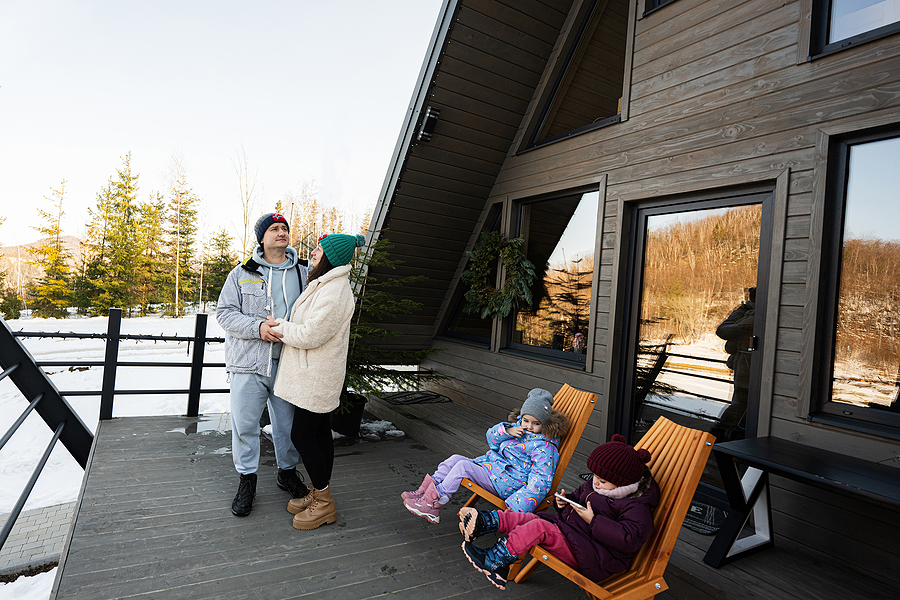Off the Grid and On the Money: How Hard Money Is Fueling America’s Homestead Movement
August 4, 2025
In a world of collapsing institutions, overpriced cities, and clickbait chaos, a quiet rebellion is growing. From rural Missouri to the backcountry of Idaho, thousands of Americans are ditching the conventional path, selling their suburban homes, quitting their nine-to-fives, and building lives rooted in self-sufficiency, land, and freedom.
They’re starting homesteads. Converting buses. Buying raw land. Living off-grid.
And guess who’s helping fund the dream?
Not banks.
Not the government.
Hard money lenders.
Why Traditional Lenders Say “No” to Off-Grid Dreams
Try walking into a local bank and asking for a loan to buy a yurt, convert a school bus into a tiny home, or build a cabin on 10 acres of raw land with no utilities.
You’ll get one of two responses:
-
A blank stare.
-
A polite “no” because your idea doesn’t fit into their underwriting algorithm.
Banks don’t like weird. They want cookie-cutter homes in cookie-cutter neighborhoods with a W-2 borrower who’s been at the same job for five years. They don’t want risk, they don’t want stories, and they definitely don’t want to hear about your solar-powered well pump.
But hard money lenders? They look at the deal, not the dream.
If the land has value, if the plan is tight, and if the borrower is serious, private lenders will often say “yes” when everyone else runs away.
The Rise of the Self-Sufficient Investor
There’s a new kind of borrower emerging. Not the slick developer with blueprints and an architect, but the freedom-focused doer. Someone who wants to:
-
Build a barndominium with their own hands
-
Live mortgage-free on an off-grid property
-
Grow food, raise animals, and generate their own power
-
Flip rural land to other off-gridders for profit
This isn’t just a lifestyle movement. It’s an economic one. And many of these deals are happening fast, without the luxury of waiting 45 days for a bank loan.
Enter: hard money.
Quick closings. Asset-based underwriting. Flexible terms. No red tape.
This is rocket fuel for people who want to escape the grid and take control of their lives.
Case Study: The Cabin Hustler
Logan, a 34-year-old veteran in Tennessee, bought 18 acres of raw land with cash he scraped together from selling his car and savings. But he needed $70,000 to build a modest 2-bed cabin using local labor and a prefab shell.
No W-2. No formal job. His income came from a mix of welding gigs, online resales, and VA benefits. Banks laughed.
A local hard money lender, however, saw potential. The ARV (after repair value) was projected at $180,000. They funded him in 10 days.
Today, Logan lives in the cabin debt-free. He sells organic eggs at the farmers market, and he’s working on a second property next door—also with hard money.
This is the new American Dream. And hard money is making it happen.
Why Hard Money Lenders Should Pay Attention
This trend isn’t a fad. It’s a reaction.
People are tired of overpriced cities, HOAs, and being told how to live. They want land, freedom, and something real. As a lender, this is a rapidly growing niche with massive upside:
-
Low competition from banks
-
High demand for creative financing
-
Strong borrower commitment and sweat equity
-
Huge content opportunities for borrower success stories
The homestead crowd isn’t flaky. They’re determined, resourceful, and mission-driven. When paired with smart lending, it’s a win-win.
What Borrowers Need to Know
If you’re ready to buy land, build small, or go off-grid, here’s how to make hard money work for you:
1. Know your numbers.
Have a clear plan for what you’re building, what it will cost, and what it will be worth.
2. Show your work ethic.
Hard money lenders don’t just want equity—they want to know you won’t flake. Share your past projects or what sweat equity you’ll bring to the table.
3. Get creative.
Use hard money to secure the land, fund your build, or bridge to a long-term loan once your homestead is established.
4. Use HardMoneyHome.com to shop smart.
Compare dozens of lenders nationwide to find someone who understands rural or off-grid projects.
Final Thought: Freedom Has a Funding Source
The off-grid movement isn’t about escaping society, it’s about rebuilding something better. Local economies. Real skills. Actual community.
Hard money, often seen as just a tool for flips and rehabs, is now funding something far more enduring: resilience.
If you’re ready to stop waiting for permission and start building the life you want, find a lender who thinks like you.
Because freedom might start with a yurt, but it’s backed by capital.


